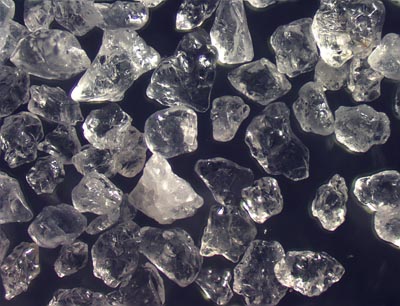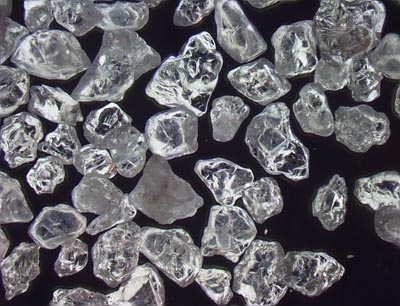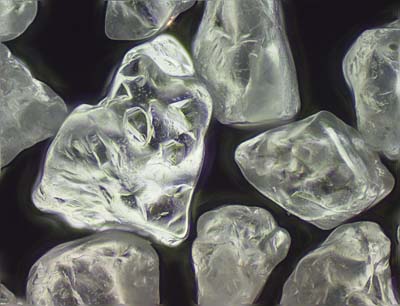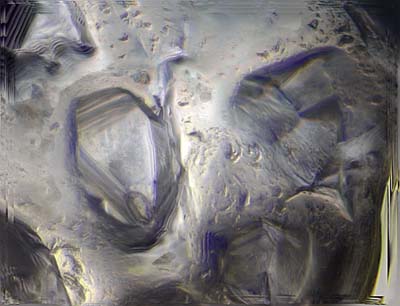|
This unusual quartz sand from Florida has
a unique property - when you walk on it it squeaks loudly. The
cause is the non abraded highly fresh surfaces rubbing together
as opposed to normal beach sand which is highly frosted.
In this set, I
take a closer look at this sand with three different types of
illumination: Backlit, Side light, and Dark field. Lets go over
briefly what the difference is and when its used.
1. Backlit. This
is the normal under the stage lighting you use with most microscopes.
A bright collimated beam of light gets concentrated by a second
condenser lens and appears as a sharply illuminated point on
the subject from behind. Thus the field is bright and is used
only subjects that are highly transparent.
2. Side Light.
When we turn off the under stage illumination and use a bright
fiber optic beam shooting it from the side across the specimen.
This is similar to the view the eye would see under strong lighting.
3. Dark Field.
Here, a special dark field stop was made and placed inside the
condenser lens. This effectively backlights the subject but with
a dark field behind so the subject appears to light up by diffraction
effects. Think of it like shining a flashlight from all sides
up at an angle while against a dark background.
Click all images
for the full size 1290 x 960 image!
 |
60x
Backlit. |
 |
60x
Side Light. |
 |
60x
Dark Field. This seems to be the best for illumination on the
clear grains. They look like boulders - But are tiny sand grains! |
 |
150x
with the Dark field mask in. Note the faces have crystalline
details. |
 |
600x
view of one of the grains surface. Sub crystal forms cover the
top, and the back lit quality of the dark field makes the grains
almost look metallic in nature. |
|
Camera: 10 Megapixel CMOS Platform: AmScope Trinocular 2000x Filters: NONE Location: Florida Elevation: 0 ft. Processing: Photoshop CS Pro HOME




